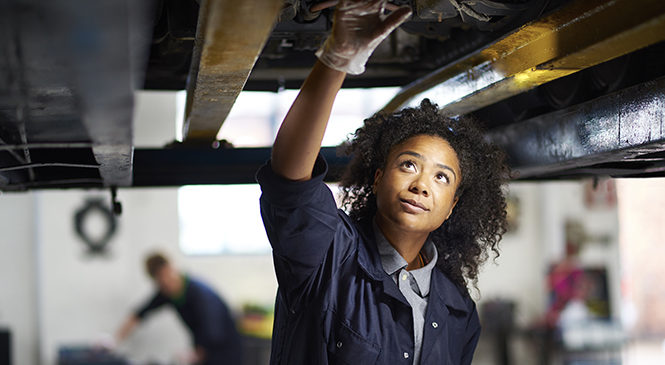In case you missed it.
This interview originally appeared on June 4, 2019 in ODT (Orthopedic Design and Technology) The interview with Steve Ek, CEO at Arthrosurface, dives into the innovation developing within the extremities market. Check it out below.
The following is an excerpt of an article that appeared in Orthopedic Design and Technology in the June issue of 2019.
Extremely High Expectations: Orthopedic Design and Technology
Michael Barbella, Managing Editor • 06.04.19 The following is an excerpt of an article that appeared in Orthopedic Design and Technology in the June issue of 2019.
ODT’s May/June feature “A Little Extreme” examines the innovation being developed in this burgeoning sector (and the overall worldwide extremities market) that eventually will contribute to its solid growth over the next half decade. Steve Ek, CEO of Franklin, Mass.-based joint preservation technology provider Arthrosurface, shared his insights on the market for the story. His full input is provided in the following Q&A.
Michael Barbella: What trends/factors are currently impacting the global extremities market?
Steve Ek: I believe the extremities market now has many examples of devices that are entering the second and third generations of their designs. Therefore, I think we are starting to see more consistent and reproducible results with these devices. At the same time, patients and surgeons are starting to demand a greater level of performance and function from these devices. Where once the goal was just to mitigate pain, now I believe the expectation [not only] is the presumed elimination of pain but also the restoration of a high level of function.
Barbella: What factors are driving growth in this market? What segment is the growth most prolific—upper extremity, lower extremity, small joint (fingers, toes), etc., or is it fairly even across the board?
Ek: Each of these segments has some exciting new growth areas. The shoulder market is exciting in the sheer volume of procedures, and the continued adoption and improvement of high-performance shoulder arthroplasty devices. The hand and wrist segment is an exciting opportunity because there are still many unmet needs for patient pathologies and osteoarthritis. And of course, we remain convinced there is a large number of underserved patients who would benefit from our 1st MTP implants.
Barbella: What types of extremity solutions are popular with surgeons? Why?
Ek: Solutions that produce reproducible and consistent results. It is a critical element in the doctor patient relationship that expectations are set preoperatively and then reasonably achieved. It keeps everyone happier.
Barbella: What makes the extremity market an attractive alternative to the large joint and spine sectors? Why is this one of the fastest-growing areas of orthopedics?
Ek: My feeling is that those devices and procedures are technologically mature. It’s pretty hard to improve on some of those operations. On the other hand, some of the extremities markets can still benefit from improved technologies and designs.
Barbella: What new innovations/technologies are in the works? What technologies hold the most promise for patients? For market growth?
Ek: We have been working with a partner on a very exciting new technology platform for the past couple of years and have just launched our first commercial product resulting from it. The technology allows us to process and shape allograft tissues into 3D forms that can be optimized for specific implant procedures. Every time we show this technology to surgeon design partners, we hear of new potential applications, so we are very excited.
Barbella: How does your company stay innovative in this increasingly crowded market? How do you differentiate yourself from other players in the sector?
Ek: For a company our size, it’s innovate or be crushed by larger players. Innovation has always been the key to our growth, with our annual revenue usually consisting of approximately 15 percent to 20 percent growth revenue generated from the previous year’s new product introductions. Our innovation model relies on staying close to surgeons and understanding where their unmet needs are or where they are disappointed with current treatment options.
Barbella: How is product development in extremities different than that in large joint or spine?
Ek: I think it is generally the same process but only tracking at a faster pace. I am also inclined to think it’s a bit more fun as the field of challenges and potential solutions remains wide open.
Barbella: How is value-based healthcare and market forces like robotics, 3D printing, and computer-aided surgery impacting extremities technologies and product development?
Ek: Honestly, I think it is too early to know how many of these technologies will still be with us in five years. Clearly some of these technologies are very effective from a marketing standpoint, and some of these technologies have proven to produce better outcomes in specific surgical settings. It will be interesting to see if our healthcare system will continue to bear the cost of some of these technologies or if surgeons will revert to more time-tested older technologies based on pricing, time, or simplicity reasons.
Barbella: How do you expect the extremities market to evolve over the next half-decade?
Ek: I believe that based on the number of surgical procedures that fit under the umbrella term “extremities” there will be a large continued growth in the sector for at least the next five years. I suspect there will likely be a wave of consolidation beyond that, but I am not convinced that it will be the large ortho/recon/spine players driving the consolidation, but rather extremities-focused companies securing the space.
Click here to read the full article in Orthopedic Design & Technology.




